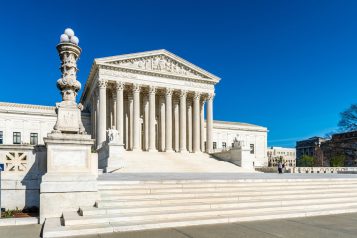
Photo Credit: Paul Samakow Law Offices
Burns are some of the most devastating injuries that a person can experience. Doctors say burn injuries are the single most difficult to treat because they can damage every part of the body and its systems, and often they affect many.
These injuries can be caused by fire, scalding water, chemicals, radiation, or electricity. They can be severe and can lead to permanent or long-term physical and emotional pain.
Severe burn injuries can increase the risk for all types of cancer; they can also cause cardiovascular and gastrointestinal diseases, nervous system and musculoskeletal disorders, diabetes, infections, scarring, loss of muscle strength, loss of muscle mass, and loss of bone density.
Burn injuries can have a significant impact on a patient’s quality of life and well-being. Resulting ailments can cause chronic, persistent pain, which can lead to fatigue; both could eventually decrease the enjoyment of life.
The road to recovery can include expensive medical treatments and rehabilitation, and in some instances, lifetime care is required. Survivors should be fully compensated — for all damages.
Determining Full Compensation for A Burn Injury
Full compensation must include both “economic” (or monetary) losses, and “non-economic” (or “pain and suffering”) damages. In some situations, as allowed by state law and depending on the conduct or failure of the at-fault party or entity, punitive damages (to punish the wrongdoer) may be available to a survivor.
Economic damages are measurable costs, including medical bills and lost income. Burn treatment is very expensive. The expense can, and often does, continue for years and even throughout the patient’s life. Medical procedures such as plastic and reconstructive surgeries can continue decades after the burn has occurred.
An experienced attorney will engage a life-care planner to calculate the value of these expenses. A life-care planner calculates all relevant future medical costs and other non-medical costs. Medical care can include plastic surgery, dermatology, pain management, massage therapy, laser therapy, steroid use, physical and occupational therapy, neuropsychological services, psychiatric counseling, home-health services, medicines, and diagnostic costs such as x-rays, MRIs. Non-medical costs can include charges for wheelchairs, walkers, crutches, cushions, ramps, compression garments, special footwear, bedsheets, pressure mattresses, sprays, ointments, sun-protective clothing, transportation costs for medical care, and much, much more.
Burn injuries often have a significant impact on earnings, and losses must be included in the calculations for full compensation. The ability to work can be impacted by a resulting amputation, loss of range of motion, severe disfigurement, loss of sight or hearing, and other damage. Even though the patient may appear to make a “complete” recovery, these are often real consequences that can affect earnings and the ability to work. Future employment may be impossible, particularly if the patient’s previous work involved physical activity. However, if a return to work is possible, life-care planning can include job retraining costs.
Additionally, non-economic losses must be included for a complete evaluation of damages. The true and full extent of suffering — physical and psychological — must be considered.
Clearly, burn survivors can experience pain — often horrible pain — because nerve endings were exposed and damaged when skin was burned away. There can be frequent and continuous pain from tissue damage and from irritation of these tissues during necessary procedures, such as dressing changes and splinting.
As survivors unfortunately know, early skin-grafting procedures are extremely painful. The grafting procedure leaves the donor site with a painful injury causing new second-degree-type burns. If the patient does not have enough unburned skin to use for grafting, other types of skin or coverings may be used to temporarily close the wound. What psychological effect does this have on someone who knows they have something other than their own skin as part of their body?
Early on after a burn, survivors are likely forced to deal with numerous surgeries and painful dressing changes. Severe burns involving 20% or more of the body are difficult to manage medically in a single instance; the patient therefore would require multiple surgical procedures. How many procedures can someone endure before they become numb, or start to wonder when, or if, their trauma will end?
Emotional and psychological issues abound for burn survivors and must be included in full compensation. Post-traumatic stress disorder (PTSD) is not uncommon for survivors with serious and/or permanent burn injuries. Additional issues include major depression, loss of confidence, loss of self-esteem, sleep difficulties, flashbacks, irritability, loss of interest in previously enjoyable activities, negative self-thoughts, loss of relationships including loss of intimacy, and social withdrawal. Survivors’ enjoyment of life can suffer significantly.
Compensation must account for the fact that a survivor’s ordeal is often far from over once they return home. While a patient’s wounds are still healing, regular painful dressing changes are required, and the patient must undergo both physical and occupational therapy. Many survivors experience frightening flashbacks, and they are reluctant to start any necessary counseling despite symptoms such as anger, anxiety, and fear, which can be intense and all-consuming. Who wants to relive excruciating memories? Compensation must include these continuing issues.
When burn injuries are visible, particularly on the face, patients are particularly vulnerable to psychological complications. “Looks” or insensitive comments, particularly from peers or co-workers, can make survivors feel diminished. And what about not wanting to be in family photographs?
There are also losses associated with childcare if the survivor is a parent of minor children. Not being able to accompany children to activities or help with homework is upsetting to both parent and child.
Burn injuries should be significantly compensated.
An Experienced Burn Injury Attorney Factors Everything into Compensation
National burn attorney Paul Samakow represents survivors of burn injuries or their families. His experience is extensive, as he has been practicing law since 1980. In his career, he has positively affected over 100,000 people. Call him for a free strategy and planning session at 1-833-MY-BURNS (1-833-692-8767), or visit nationalburnattorney.com for more information and numerous resources.


















